- Home
- Jules Verne
Journey to the Center of the Earth (Barnes & Noble Classics Series) Page 18
Journey to the Center of the Earth (Barnes & Noble Classics Series) Read online
Page 18
I hastened forward. I could not give a name to these peculiar specimens. Did they not form part of the two hundred thousand plant species known to date, and was it necessary to give them a place of their own among the water plants? No. When we arrived in their shade my surprise turned into admiration.
In fact, I was facing products of the earth, but grown to gigantic stature. My uncle immediately called them by their name.
“It’s just a forest of mushrooms,” he said.
And he was right. Imagine the development of these plants, which prefer a warm, moist climate. I knew that according to Bulliard, bb the Lycoperdon giganteum reaches a circumference of eight or nine feet; but these were white mushrooms thirty to forty feet tall, with a cap of the same diameter. There they stood by the thousands. No light could penetrate into their shade, and complete darkness reigned beneath these juxtaposed domes that resembled the round, thatched roofs of an African town.
Yet I wanted to go further. A deadly cold descended from these fleshy vaults. For half an hour we wandered in the humid darkness, and it was with a genuine feeling of well-being that I returned to the seashore.
But the vegetation of this subterranean region was not limited to mushrooms. Farther on there were clusters of tall trees with faded foliage. They were easy to identify; these were the lowly shrubs of earth in prodigious sizes, lycopods a hundred feet tall, giant sigillarias, tree ferns as tall as pines in northern latitudes, lepidodendra with cylindrical forked stems ending in long leaves and bristling with coarse hairs like monstrous fat plants.
“Amazing, magnificent, splendid!” exclaimed my uncle. “Here is the entire flora of the Secondary period of the world, the Transition period. Look at these humble garden plants that were trees in the early ages of the globe! Look, Axel, and admire them! Never has a botanist been at a celebration such as this!”
“You’re right, Uncle. In this immense greenhouse, Providence seems to have wanted to preserve the prehistoric plants which the wisdom of scholars has so successfully reconstructed.”
“You put it well, my boy, it is a greenhouse; but you’d put it even better if you added that it’s perhaps a zoo.”
“A zoo.”
“Yes, no doubt. Look at this dust under our feet, these bones scattered on the ground.”
“Bones!” I exclaimed. “Yes, bones of prehistoric animals!”
I rushed toward these centuries-old remains made of an indestructible mineral substance.bc Without hesitation I could name these gigantic bones that resembled dried-up trunks of trees.
“Here is the lower jaw of a mastodon,” I said. “These are the molar teeth of the deinotherium; this femur must have belonged to the greatest of those beasts, the megatherium.bd It certainly is a zoo, for these remains were not brought here by a cataclysm. The animals to whom they belonged lived on the shores of this subterranean sea, under the shade of those tree-sized plants. Look, I see entire skeletons. And yet...”
“And yet?” said my uncle.
“I don’t understand the presence of such quadrupeds in this granite cavern.”
“Why?”
“Because animal life existed on the earth only in the Secondary period, when a sedimentary soil had been created through alluvial deposits and had taken the place of the white-hot rocks of the Primitive period.”
“Well, Axel, there’s a very simple answer to your objection, and that is that this soil is alluvial.”
“What! at such a depth below the surface of the earth?”
“No doubt; and there’s a geological explanation for this fact. At a certain period the earth consisted only of a flexible crust, subject to alternating movements from above or below, by virtue of the laws of gravity. Probably there were landslides, and some alluvial soil was precipitated to the bottom of these chasms that had suddenly opened up.”
“That must be it. But if prehistoric animals have lived in these underground regions, who says that one of these monsters is not still roaming in these gloomy forests or behind these steep crags?”
At this thought, I surveyed the various directions not without fear; but no living creature appeared on the barren strand.
I felt rather tired, and went to sit down at the end of a promontory, at whose foot the waves broke noisily. From here my view included this entire bay formed by an indentation of the coast. In the background, a little harbor lay between pyramidal cliffs. Its still water rested untouched by the wind. A brig and two or three schooners could easily have cast anchor in it. I almost expected to see some ship leave it with sails set and take to the open sea under the southern breeze.
But this illusion vanished quickly. We were the only living creatures in this subterranean world. When there was a lull in the wind, a silence deeper than that of the desert fell on the arid rocks and weighed down on the surface of the ocean. I then tried to pierce the distant haze and to tear the curtain that hung across the mysterious horizon. What questions lay at the tip of my tongue? Where did that ocean end? Where did it lead to? Could we ever explore its opposite shores?
These were white mushrooms thirty to forty feet tall.
My uncle had no doubt about it. I both desired and feared it at the same time.
After spending an hour in the contemplation of this marvelous spectacle, we walked back on the pebbles to the grotto, and I fell into a deep sleep in the midst of the strangest thoughts.
XXXI
THE NEXT MORNING I woke up feeling perfectly well. I thought a bath would do me good, and I went to dive into the waters of this Mediterranean sea for a few minutes. Certainly it deserved this name more than any other ocean.be
I came back to breakfast with a good appetite. Hans knew how to cook our little meal; he had water and fire at his disposal, so that he could change our ordinary fare a bit. For dessert he served us a few cups of coffee, and this delicious beverage never seemed more pleasant to my sense of taste.
“Now,” said my uncle, “this is the time of the high tide, and we mustn’t miss the opportunity to study this phenomenon.”
“What, the tide!” I exclaimed.
“No doubt.”
“Can the influence of the sun and moon be felt even here?”
“Why not? Aren’t all bodies subject to universal gravity in their entirety? So this mass of water can’t escape the general law. And in spite of the heavy atmospheric pressure on the surface, you’ll see it rise like the Atlantic itself.”
At that moment we walked on the sand of the shore, and the waves were gradually encroaching on the pebbles.
“Here’s the beginning of high tide,” I exclaimed.
“Yes, Axel, and judging from these tidemarks of foam, you can see that the ocean rises about ten feet.”
“That’s wonderful!”
“No, it’s natural.”
“It’s easy for you to say, Uncle, but all of this seems extraordinary to me, and I can hardly believe my eyes. Who would ever have imagined an ocean under this terrestrial crust, with ebbing and flowing tides, with winds and storms!”
“Why not? Is there any physical reason against it?”
“I don’t see any, so long as we abandon the theory of core heat.”
“So this far Davy’s theory has been confirmed?”
“Obviously, and therefore nothing contradicts the existence of oceans and continents in the interior of the earth.”
“No doubt, but uninhabited.”
“Well! Why wouldn’t this water be the sanctuary of fishes of an unknown species?”
“At any rate, we haven’t seen a single one so far.”
“Well, let’s make some lines, and see if the bait draws as much here as it does in surface oceans.”
“We’ll try, Axel, because we must penetrate all the secrets of these new regions.”
“But where are we, Uncle? For I haven’t asked you that question yet, which your instruments must be able to answer.”
“Horizontally, three hundred and fifty leagues from Iceland.”
&nb
sp; “As much as that?”
“I’m sure that I’m not off even by five hundred fathoms.”
“And does the compass still show south-east?”
“Yes, with a westerly deviation of 19° 45’. just as above ground. As for its dip, something curious is occurring that I’ve observed with the greatest care.”
“What is that?”
“It’s that the needle, instead of dipping toward the pole as in the northern hemisphere, on the contrary points upward.”
“Must we then conclude that the magnetic pole is somewhere between the surface of the globe and the point where we are?”
“Exactly, and it’s likely that if we were to reach the polar regions at about the seventieth degree, where Sir James Rossbf discovered the magnetic pole, we would see the needle point straight up. Therefore that mysterious center of attraction does not lie at a great depth.”
“Indeed, and that’s a fact which science had not anticipated.”
“Science, my boy, is built on errors, but errors which it’s good to commit because they gradually lead to the truth.”
“What depth have we reached now?”
“Thirty-five leagues below the surface.”
“So,” I said, examining the map, “the Highlands of Scotland are over our heads, and the snow-covered peaks of the Grampian Mountains rise up to prodigious heights.”
“Yes,” answered the professor laughing. “It’s a bit of a heavy load to bear, but the vault is solid. The great architect of the universe has built it of the best materials, and man could never have given it such a reach! What are the arches of bridges and the naves of cathedrals compared to this vault with a three-league radius, beneath which an ocean and its storms can unfold at their ease?”
“Oh, I’m not afraid that it’ll fall down on my head. But now, Uncle, what are your plans? Aren’t you thinking of returning to the surface now?”
“Return! No, indeed! We’ll continue our journey, since everything has gone well so far.”
“But I don’t see how we can go down beneath this liquid surface.”
“Oh! I’m not going to dive in head foremost. But if all oceans are properly speaking only lakes, since they are surrounded by land, of course this interior sea is also encircled by a granite coast.”
“That’s beyond question.”
“Well then, on the opposite shores we’ll find new passages opening up.”
“How wide do you estimate this ocean to be?”
“Thirty or forty leagues.”
“Ah!” I remarked, thinking that this estimate might well be inaccurate.
“So we have no time to lose, and we’ll set sail tomorrow.”
Involuntarily I looked about for the ship that was supposed to transport us.
“Ah!” I said, “set sail, will we? Fine! But aboard what ship will we travel?”
“It’ll not be aboard a ship at all, my boy, but on a good, solid raft.”
“A raft!” I exclaimed. “A raft is just as impossible to build as a ship, and I don’t see ...”
“You don’t see, Axel, but if you listened, you might hear.”
“Hear?”
“Yes, certain strikes of the hammer that would tell you that Hans is already at work on it.”
“He’s building a raft?”
“Yes.”
“What! He’s already felled trees with his axe?”
“Oh, the trees were already down. Come, and you’ll see him at work.”
After a walk of a quarter of an hour, on the other side of the promontory which formed the little natural harbor, I saw Hans at work. A few more steps, and I was at his side. To my great surprise, a half-finished raft was already lying on the sand; it was made out of beams of a peculiar wood, and a great number of planks, hinges and frames were strewn about the ground. It was enough material for an entire fleet.
“Uncle,” I exclaimed, “what wood is this?”
“It is pine, fir, birch, all kinds of northern conifers, mineralized by the seawater.”
“Is that possible?”
“It’s called ‘surturbrand’ or fossil wood.”
“But then, like lignite, it must be as hard as stone, and cannot float?”
“Sometimes that happens; some of these woods have become true anthracites; but others, like these, have only gone through the beginnings of fossil transformation. Just look,” added my uncle, throwing one of those precious remains into the sea.
The piece of wood, after disappearing, returned to the surface of the waves and swung back and forth with their movements.
“Are you convinced?” said my uncle.
“Convinced, although it’s incredible!”
The next evening, thanks to our guide’s skill, the raft was completed; it was ten feet by five feet; the beams of surturbrand, tied together with strong rope, offered an even surface, and when it was launched, this improvised vessel floated calmly on the waves of the Lidenbrock Sea.
XXXII
ON AUGUST 13 WE awoke early. We planned to inaugurate a new mode of fast and easy transportation.
The rigging of the raft consisted of a mast made from two poles tied together, a yard made of a third, a sail from our blankets. There was no lack of rope. The whole thing was solid.
At six o’clock, the professor gave the signal to embark. The food supplies, the baggage, the instruments, the guns, and a good quantity of fresh water gathered from the rocks were all put in their place.
Hans had installed a rudder so as to be able to steer his floating vessel. He took the tiller. I detached the rope that moored us to the shore. The sail was set, and we rapidly left the land behind.
At the moment of leaving the little harbor, my uncle, who insisted on his geographical nomenclature, wanted to give it a name, proposing mine among others.
“Really,” I said, “I have another proposal.”
“Which one?”
“Graüben. Port Graüben, that’ll look very good on the map.”
“Let it be Port Graüben then.”
In this way, the memory of my beloved Virland girl connected with our adventurous expedition.
The wind blew from the north-west. We sailed at great speed with the wind from behind. The very dense layers of the atmosphere had considerable force and acted on the sail like a powerful fan.
After an hour, my uncle was able to estimate our speed with a good deal of precision.
“At this rate,” he said, “we’ll travel at least thirty leagues in twenty-four hours, and we’ll soon come in sight of the opposite shore.”
I made no answer, but went and sat at the front of the raft. The northern shore was already beginning to dip under the horizon. The eastern and western strands spread wide as if to make our departure easier. An immense ocean stretched out before my eyes. The grayish shadows of great clouds glided over its surface, which seemed to weigh down this somber water. The silvery rays of the electric light, here and there reflected by the spray, shot out little points of light from our wake. Soon we lost sight of land entirely, all points of orientation disappeared, and without the foamy wake of the raft, I might have thought that it was perfectly motionless.
Toward noon, immense algae could be seen floating at the surface of the water. I was aware of the vital power of these plants, which grow at a depth of over twelve thousand feet under the sea, reproduce under a pressure of four hundred atmospheres, and sometimes form barriers strong enough to impede the course of a ship; but there were never, I think, more gigantic algae than those in the Lidenbrock Sea.
Our raft passed along fucus that were three or four thousand feet long, immense serpents that continued beyond the reach of sight; I entertained myself in tracing these endless ribbons, always thinking that I had reached the end, and for hours my patience competed with my surprise.
What natural force could produce such plants, and what must the earth have looked like in the first centuries of its formation, when under the impact of heat and humidity, the vegetable ki
ngdom alone developed on its surface!
Evening came and, as I had noted on the previous day, the luminosity of the air did not diminish. It was a constant phenomenon whose permanence could be relied on.
After dinner I lay down at the foot of the mast, and immediately fell asleep in the midst of carefree reveries.
Hans, motionless at the helm, let the raft run, which at any rate did not even need steering, with the wind blowing from behind.
Since our departure from Port Graüben, Professor Lidenbrock had charged me with keeping the “ship log,” writing down even the smallest observation, recording interesting phenomena, the direction of the wind, the speed, the route we had taken—in a word, all the details of our strange sea voyage.
I will therefore limit myself here to reproducing these daily notes, written, so to speak, as events directed, so as to provide a more exact account of our passage.
Friday, August 14.—Steady breeze from the northwest. The raft makes rapid progress in a straight line. The coast is thirty leagues behind us in the direction of the wind. Nothing on the horizon.
Intensity of light remains the same. Good weather, that is, the clouds are high up, not very dense, and bathed in a white atmosphere that looks like molten silver. Thermometer: +32°C.
At noon Hans fastens a hook to the end of a line. He baits it with a small piece of meat and throws it into the sea. For two hours he catches nothing. Are these waters uninhabited, then? No. A pull on the line. Hans draws it in and lifts up a fish that struggles vigorously.
“A fish!” exclaims my uncle.
“That’s a sturgeon!” I exclaimed in turn. “A small sturgeon!”
The professor looks carefully at the animal and does not share my opinion. The fish has a flat, round head, and the front of its body is covered with bony plates; its mouth has no teeth; large, well-developed pectoral fins are attached to a body without tail. This animal does belong to the same order where naturalists place the sturgeon, but it differs from it in many essential aspects.
My uncle makes no mistake about this, and after a rather brief examination, he says:

 Michael Strogoff; Or the Courier of the Czar: A Literary Classic
Michael Strogoff; Or the Courier of the Czar: A Literary Classic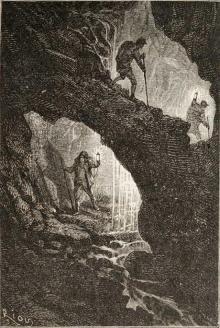 Voyage au centre de la terre. English
Voyage au centre de la terre. English Journey Through the Impossible
Journey Through the Impossible The Castaways of the Flag
The Castaways of the Flag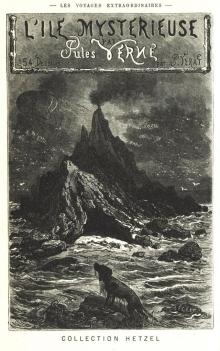 L'île mystérieuse. English
L'île mystérieuse. English Maître du monde. English
Maître du monde. English Around the World in Eighty Days
Around the World in Eighty Days A Voyage in a Balloon
A Voyage in a Balloon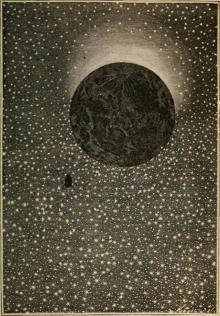 From the Earth to the Moon, Direct in Ninety-Seven Hours and Twenty Minutes: and a Trip Round It
From the Earth to the Moon, Direct in Ninety-Seven Hours and Twenty Minutes: and a Trip Round It Paris in the Twentieth Century
Paris in the Twentieth Century City in the Sahara - Barsac Mission 02
City in the Sahara - Barsac Mission 02 The English at the North Pole
The English at the North Pole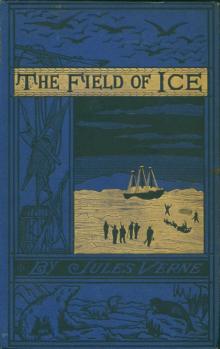 The Field of Ice
The Field of Ice From the Earth to the Moon
From the Earth to the Moon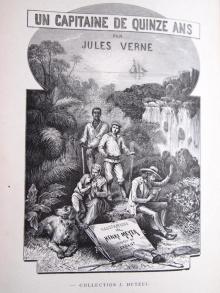 Un capitaine de quinze ans. English
Un capitaine de quinze ans. English The Mysterious Island
The Mysterious Island Les indes-noirs. English
Les indes-noirs. English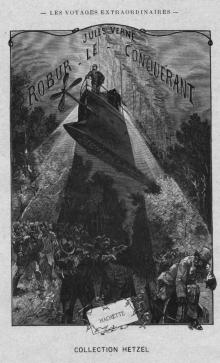 Robur-le-conquerant. English
Robur-le-conquerant. English Propeller Island
Propeller Island Around the World in Eighty Days. Junior Deluxe Edition
Around the World in Eighty Days. Junior Deluxe Edition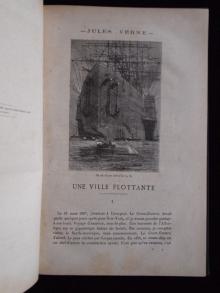 Les forceurs de blocus. English
Les forceurs de blocus. English In the Year 2889
In the Year 2889 Journey to the Centre of the Earth
Journey to the Centre of the Earth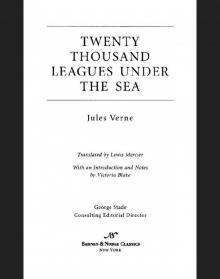 Twenty Thousand Leagues Under the Sea
Twenty Thousand Leagues Under the Sea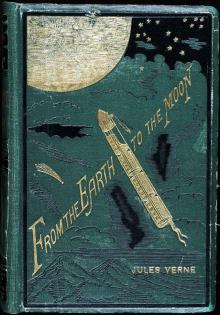 From the Earth to the Moon; and, Round the Moon
From the Earth to the Moon; and, Round the Moon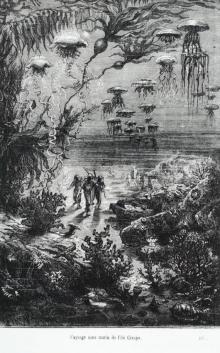 Vingt mille lieues sous les mers. English
Vingt mille lieues sous les mers. English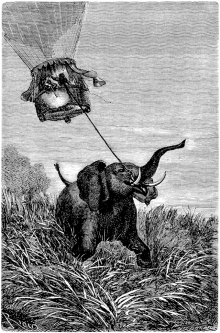 Cinq semaines en ballon. English
Cinq semaines en ballon. English Twenty Thousand Leagues under the Seas
Twenty Thousand Leagues under the Seas Face au drapeau. English
Face au drapeau. English Michael Strogoff; Or, The Courier of the Czar
Michael Strogoff; Or, The Courier of the Czar Un billet de loterie. English
Un billet de loterie. English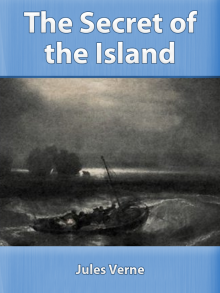 The Secret of the Island
The Secret of the Island Off on a Comet! a Journey through Planetary Space
Off on a Comet! a Journey through Planetary Space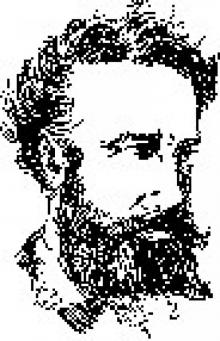 Into the Niger Bend: Barsac Mission, Part 1
Into the Niger Bend: Barsac Mission, Part 1 All Around the Moon
All Around the Moon A Journey to the Center of the Earth - Jules Verne: Annotated
A Journey to the Center of the Earth - Jules Verne: Annotated 20000 Lieues sous les mers Part 2
20000 Lieues sous les mers Part 2 Robur-le-Conquerant
Robur-le-Conquerant Les Index Noires
Les Index Noires Michael Strogoff; or the Courier of the Czar
Michael Strogoff; or the Courier of the Czar 20000 Lieues sous les mers Part 1
20000 Lieues sous les mers Part 1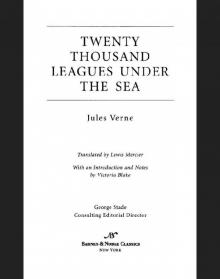 Twenty Thousand Leagues Under the Sea (Barnes & Noble Classics Series)
Twenty Thousand Leagues Under the Sea (Barnes & Noble Classics Series)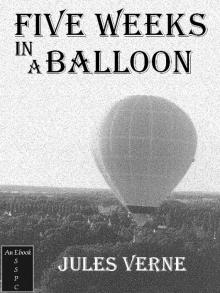 Five Weeks In A Balloon
Five Weeks In A Balloon Journey to the Center of the Earth
Journey to the Center of the Earth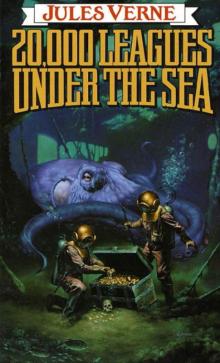 20,000 Leagues Under the Sea
20,000 Leagues Under the Sea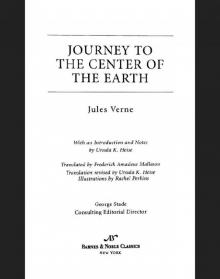 Journey to the Center of the Earth (Barnes & Noble Classics Series)
Journey to the Center of the Earth (Barnes & Noble Classics Series)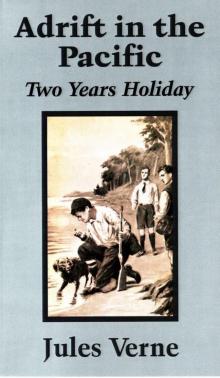 Adrift in the Pacific-Two Years Holiday
Adrift in the Pacific-Two Years Holiday The Collected Works of Jules Verne: 36 Novels and Short Stories (Unexpurgated Edition) (Halcyon Classics)
The Collected Works of Jules Verne: 36 Novels and Short Stories (Unexpurgated Edition) (Halcyon Classics) The Survivors of the Chancellor
The Survivors of the Chancellor Their Island Home
Their Island Home Le Chateau des Carpathes
Le Chateau des Carpathes Les Cinq Cents Millions de la Begum
Les Cinq Cents Millions de la Begum The Floating Island
The Floating Island Cinq Semaines En Ballon
Cinq Semaines En Ballon Autour de la Lune
Autour de la Lune